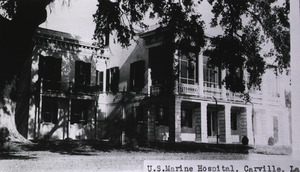Carville, Louisiana facts for kids
Quick facts for kids
Carville
|
|
|---|---|
|
Neighborhood
|
|
 |
|
| The community is renamed "Carville" | 1909 |
| Population | |
| • Total | 700 |
| • Density | 21/km2 (55/sq mi) |
| Zip code |
70721
|
Carville is a neighborhood in St. Gabriel, Louisiana. It is found in Iberville Parish, in the southern part of Louisiana. Carville is about sixteen miles south of Baton Rouge, right next to the Mississippi River.
This small community is famous for two main reasons. First, it is the childhood home of James Carville, a well-known political expert. Second, Carville was once home to the only place in America that treated a condition called leprosy for over sixty-five years. Today, you can learn all about this history at the National Hansen’s Disease Museum located there.
How Carville Got Its Name
The area we now call Carville used to have a different name: "Island." However, there were many other places in Louisiana also called "Island." To avoid confusion, the community was renamed in 1909. It was named after Louis Arthur Carville, who was the local postmaster and the grandfather of James Carville.
The Carville Hospital Story
In 1917, the United States government decided to open a special hospital in Carville. This hospital was created to treat people with leprosy, a long-term infection that affects the skin and nerves. It was officially called the "Carville National Leprosarium." This hospital was the only place in the United States dedicated to treating this condition for many years.
The hospital was run by the United States Public Health Service. Doctors and nurses there worked hard to help patients. They provided care until 1981, when new treatments allowed people to be treated at home.
The land where the hospital once stood is now known as the Gillis W. Long Center. It was named after Gillis William Long, a former U.S. Representative from Louisiana. The Louisiana Army National Guard now operates this facility. You can still visit the National Hansen’s Disease Museum there. The museum teaches visitors about the history of the hospital and the condition it treated.

